The Rocks Cry Out
39Some of the Pharisees in the crowd said to Him, "Teacher, rebuke Your disciples." 40But Jesus answered, "I tell you, if these become silent, the stones will cry out!"
- Luke 19:39-40
The rocks of the earth are testifying as to the deeds of God in the past but in this lesson we will be looking at stratigraphy or strata. Strata is everywhere. Strata is defined by Encyclopedia.com as the layered materials that were deposited over time. So we have materials deposited over time, and what we'll find out is that those materials are deposited either by water, lava or some some liquid influence. But that's what we're looking at in this study.

Strata
So how were these layers of strata deposited? You see this very beautiful hillside, mountainside, rockface, however you want to refer to it, that it's perfectly layered. All those lines of sediment just laid down in a wonderfully esthetic eye-pleasing configuration. How in the world did that happen? That's what we're looking at today. And how long did it take? Did it take millions or billions of years, or did it happen much more rapidly than that? Those are questions we're looking at in this lesson.
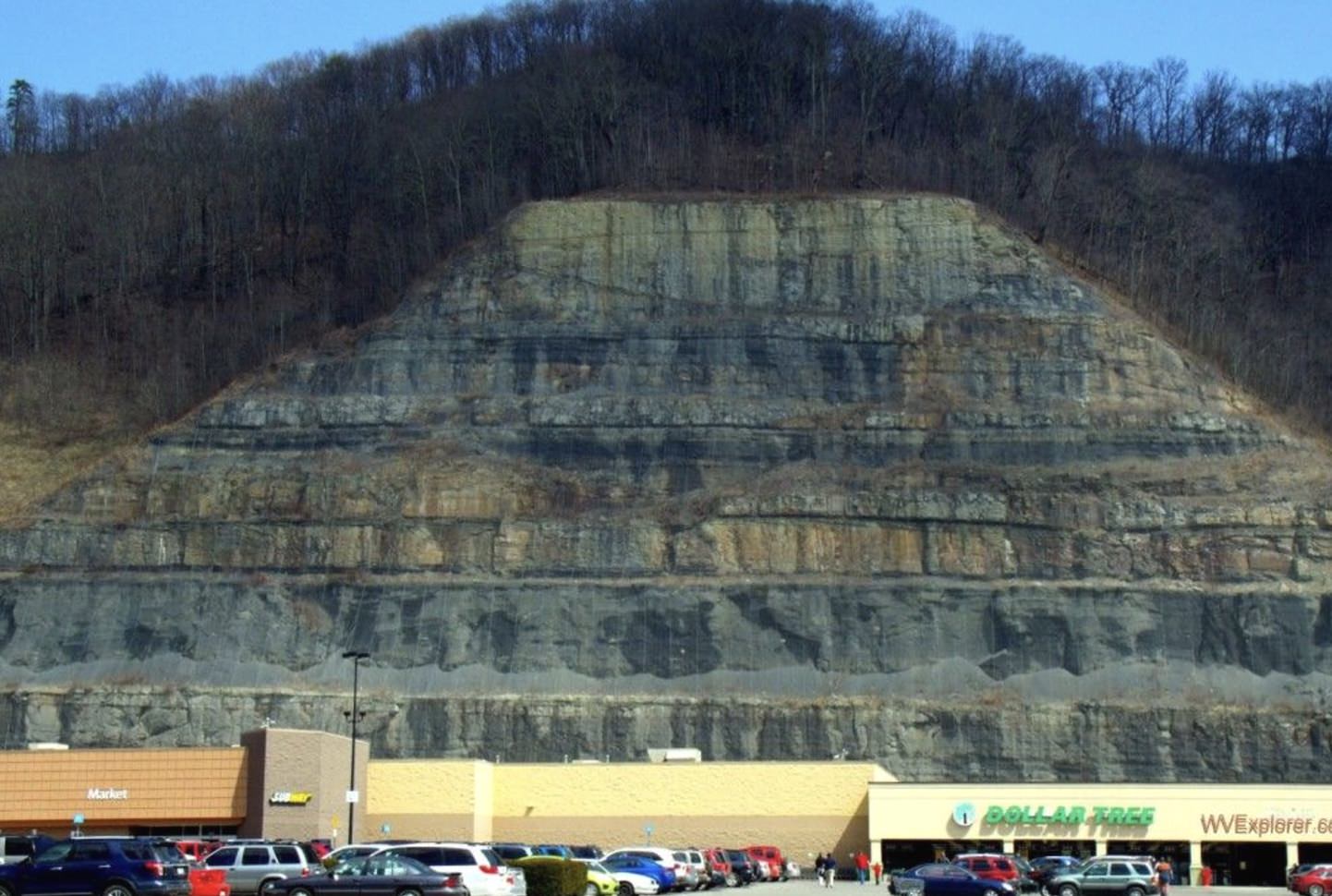
This is a picture of a hillside in Logan County, West Virginia. This is near where I grew up and this is what you have to do if you want to build anything in West Virginia, if you want to make a road, you cut off a hillside. You want to build a store, you cut off a hillside. And so this is what they have done. You'll notice vertical lines. Those are simply the places where they've drilled down through the sedimentary rock to blast and cut away pieces of that rock so they can open things up. But what I'm looking at and drawing your attention to right now are the horizontal layers, much like the ones we saw on a previous picture. This might not have the same coloration or beauty as the other picture, but you can still see those horizontal layers. And these layers are everywhere we look in the world.
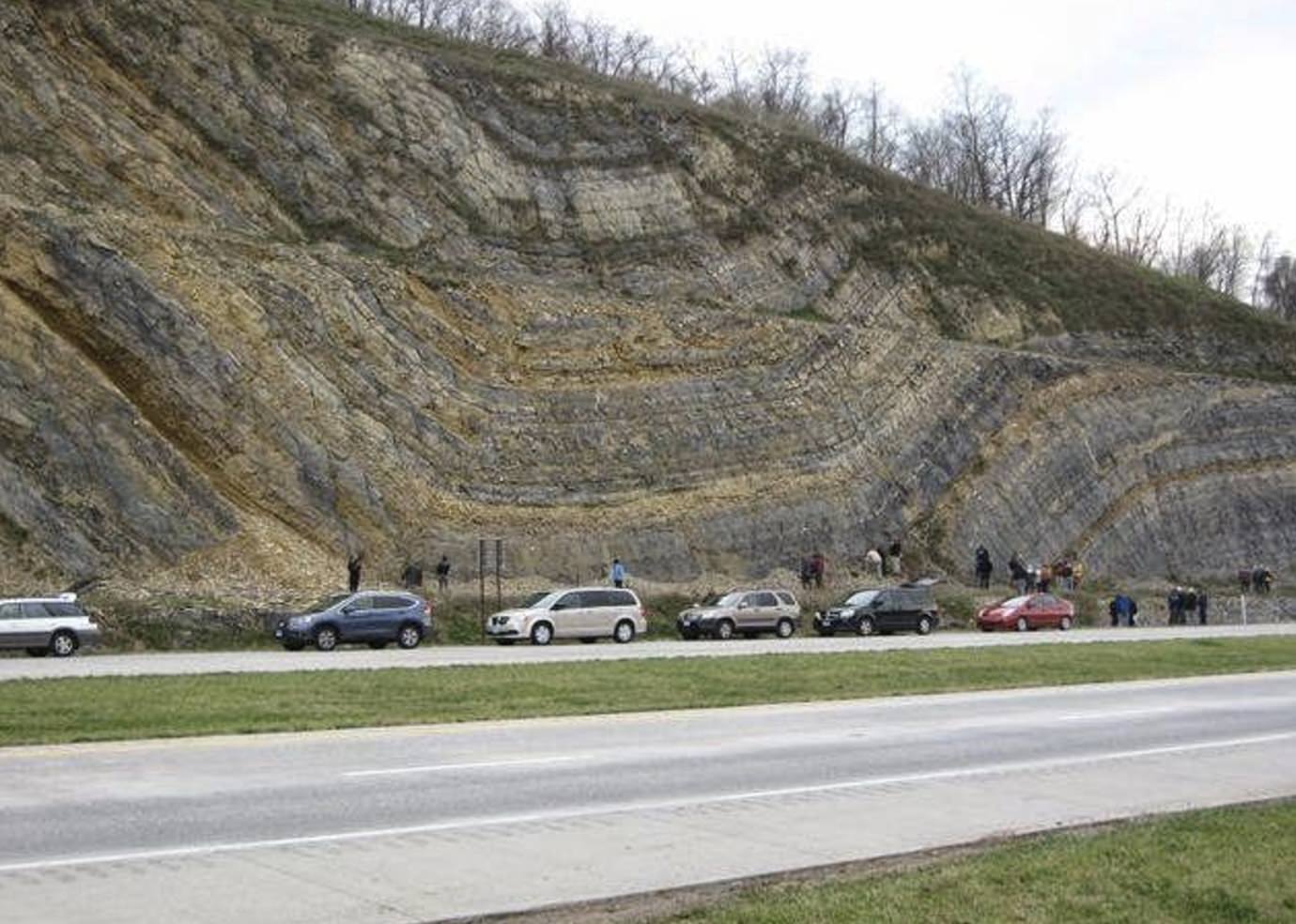
This is another area of West Virginia called Boxy Syncline. I want you to notice about these layers that they are bent. These are layers of strata that evidently before they hardened were bent. So some kind of a seismic exercise going on that twisted or turned these layers upwards. Somehow these layers of strata were bent. If these strata had hardened into stone before this had happened, then there would be break marks, there would be crumbles, but rather these layers are evenly bent, which indicates that they were still soft, still pliable when this seismic activity occurred.
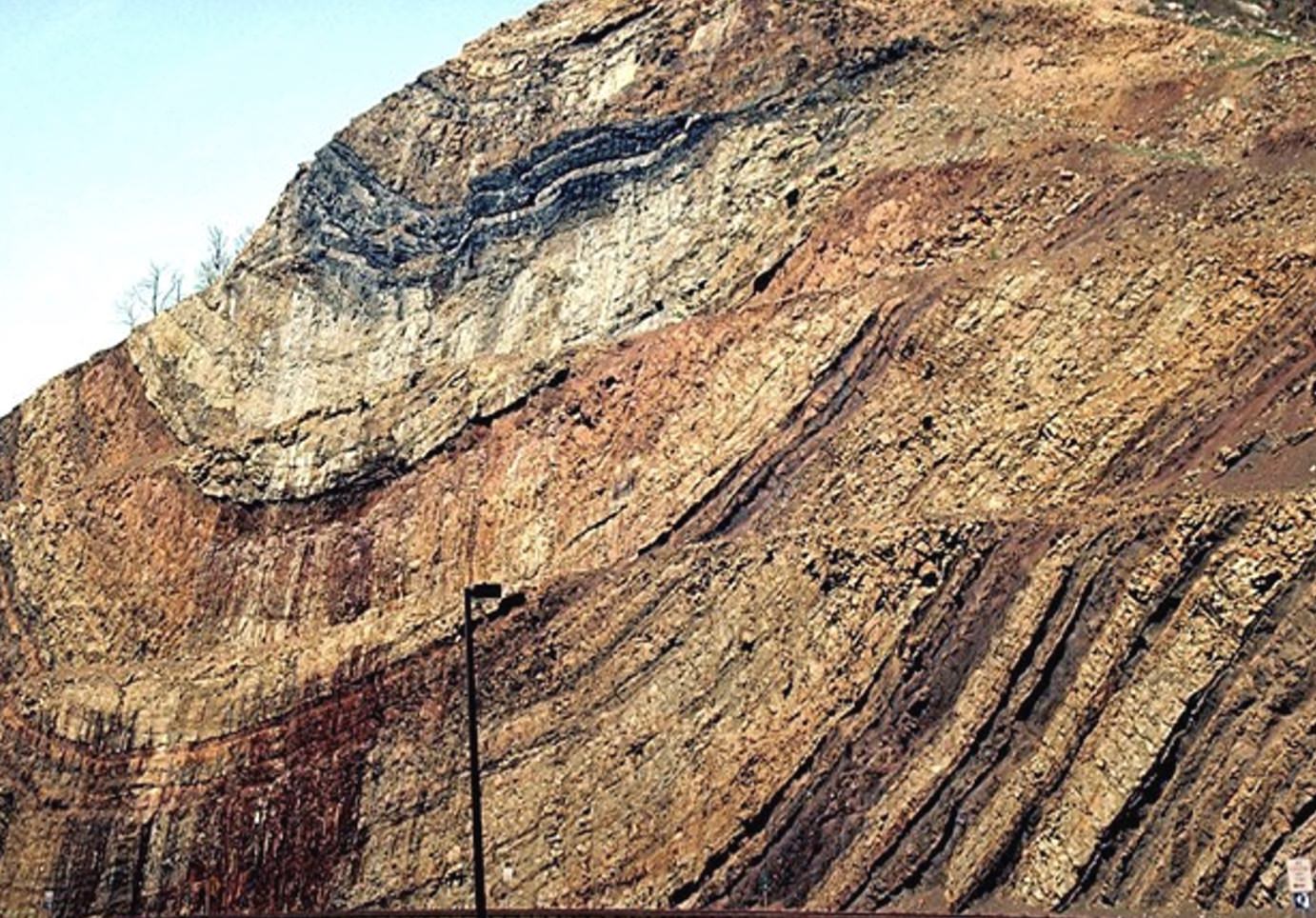
This is Beaver's Bend Fold, Oklahoma. I didn't know beavers could do things like that, but evidently there's some big beavers in the past somewhere. Of course, all kidding aside, this is simply another place where the strata has been bent. And this is in Oklahoma, in the state where we are in the United States of America, where we see the same type of stratigraphy. We've got strata that's been bent and it's not broken. So it must have been bent when it was still soft and pliable.
So how did those layers get there?
The standard explanation is that these layers were deposited slowly and gradually over long ages of time. That's what I was taught in school. That's what I have read decade after decade in all the writings that address that strata. But there's an alternative explanation, and that explanation is that these layers were deposited rapidly over a single year during the flood of Noah's day. And you can read about that flood in the Bible Book of Genesis. Chapters 6 through 8 tells us about that flood that God brought over the surface of the whole earth and covered everything to a depth of about 21 feet. So everything, according to Genesis was buried under water to a depth of at least 21 feet, and it lasted for a year. So you can imagine all of the activity that would have been taking place in that water if that happened. And the evidence looks like it did.
!! Obligatory Disclaimer !!
I am not a geologist. I am, however, fully qualified to tell you what geologists say. Everything in this lesson is being presented to you, partly because qualified geologist say it's all so, but mostly because God said it was different. When the Bible tells us that there was a great flood that covered the whole earth and then we ought to be able to find evidence of that flood. And I believe the strata is one of our best evidences for the flood of Noah's day.
As the Holy Scriptures have often been misinterpreted through the ages, so the message of the stones. I would challenge you to find anything that the Bible teaches that in one way or another has not been twisted to say something other than what it was originally meant to say. Almost everything God has taught us in the Old Covenant and in the New Covenant has been taken out of context or twisted in some way to make it give a message that God did not intend. And it's the same thing that happens with the stones in the strata. Some folks interpret it one way, but we interpret it quite a different way. And you'll have to make up your mind what you will believe about these things.
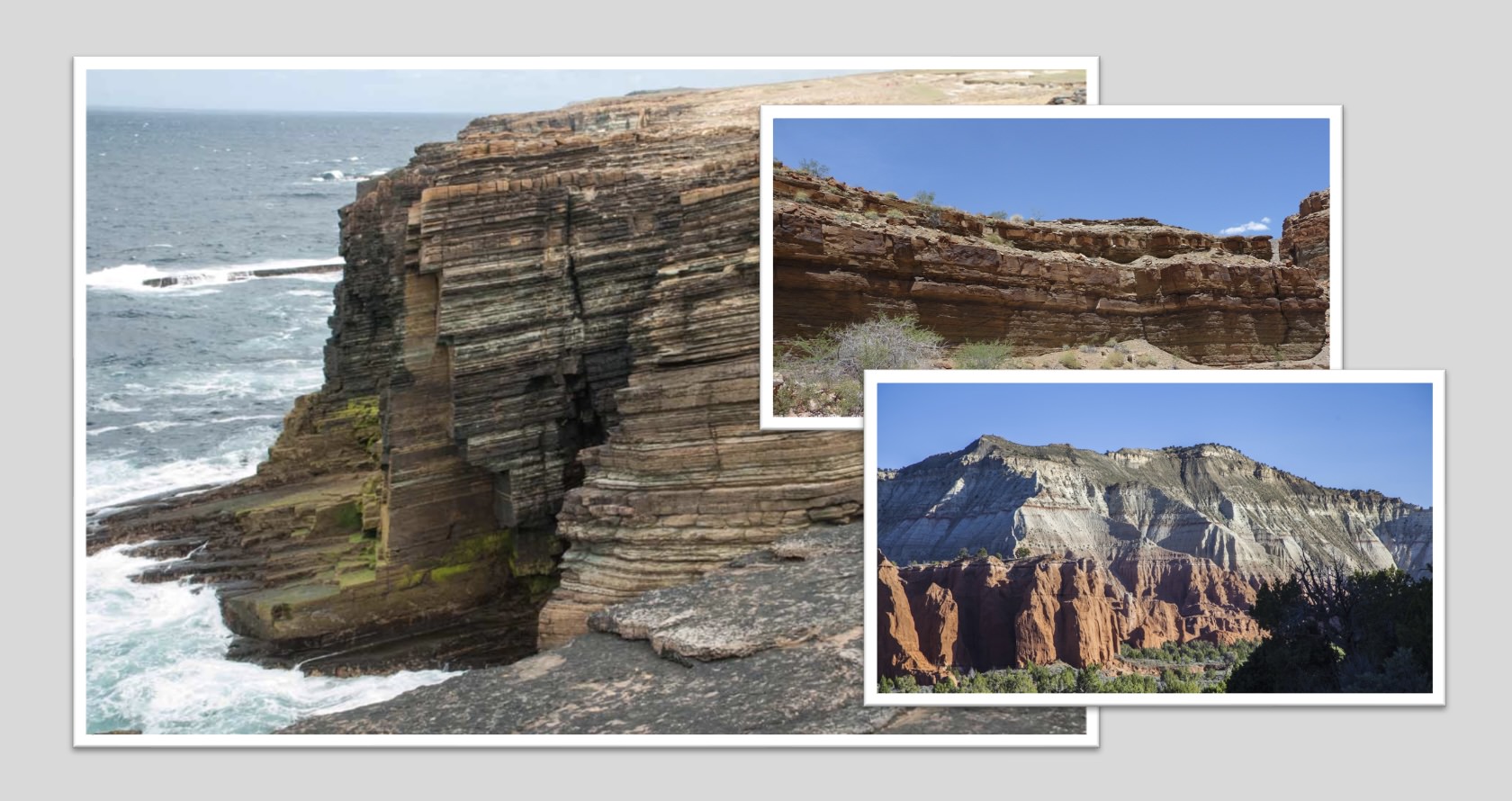
Strata is prolifically, ubiquitous. I just like to sound smart, so I use these big, long, fancy words. All that means is strata is everywhere. You see it everywhere. Here's some down by the ocean that you find on every continent of the world. Here's some in a desert canyon that you will find on nearly every continent of the world. And here's some, of course, in mountains, as we have already seen. It is everywhere around the world.
Sedimentary Rock
Sedimentary rock is made from terra sediment. But what is sediment? It is any material that settles to the bottom of a liquid. Any material that is deposited by water is considered sediment. I don't know how you make your coffee, but in times past I remember my mom had a percolator and she would put coffee grounds in the top and the water would get hot in the bottom and come up and percolate down through the coffee grounds and make coffee. And it was a wonderful way to make very good coffee. But the problem was you had a little bit of coffee grounds at the bottom of your coffee cup and all that is sediment. It's just material that settles to the bottom of a liquid. It didn't float on top. It wasn't suspended in the middle. It went right to the bottom. And that's what happens with dirt and rock and all the materials that we see layered in the sediments across the world today.
Rock made of sediment such as clastic rock. This is rock made of fragments of other rock that's transported from its source and it is deposited in water.
Rock salt or gypsum, which is formed by precipitation from solution. We're familiar with that word precipitation. We think of that in the form of rain, but we're talking about this material that's waterborne material falling through the water to the bottom and that is what is left, the sediments left at the bottom that will eventually create salt or gypsum.
And then we're looking at rock that's made from organisms such as shells, coral, algae, fecal debris, also precipitating from water falling through the water down to the bottom. And this creates, of course, limestone. So that's what sedimentary rock is.
How did all of that strata get there?
Looking at the pictures of these stratified rocks all over the face of the earth, we can read in Genesis, chapter 7 that the fountains of the great deep were opened.. We also read that the floodgates of the sky were opened. So we've got the fountains of the earth opening up and water or lava or some liquid flowing from those fountains upward. And then we've got the floodgates of the sky where water comes from the sky in the form of rain.
And by the way, up to those that day in Genesis 7, there had not been any rain falling. The mist came up from the ground is what we're told in Genesis 2. So, we have rain falling in Genesis 7, which was a new phenomenon, and that day the floodgates opening underneath the earth and all of it happening for 40 days and 40 nights. Water prevailed for 150 days flooding the earth as high as 15 cubits (21 feet) above the highest mountain before it began to recede. That's a long time. But in 50 days, the tops of the mountains were visible after ten months.

This is a picture showing the fountains of the deep in a line of volcanoes in the Atlantic Ocean. Everything you see that is red is either a volcano or a grouping of volcanoes all down through the Atlantic Ocean from the far north to the far south. There are thousands of these undersea volcanoes in the Atlantic. But we're not just looking at the Atlantic.

This image is a depiction of the volcanoes of the Pacific. They are so prolific here that this is called the Ring of Fire. Imagine all of those volcanoes erupting at once. What would it be like to have all of that lava coming to the surface of the water? How much condensation would there be? How would that change the atmosphere if all of those were to erupt at once, as we're told they did in the account of Genesis.
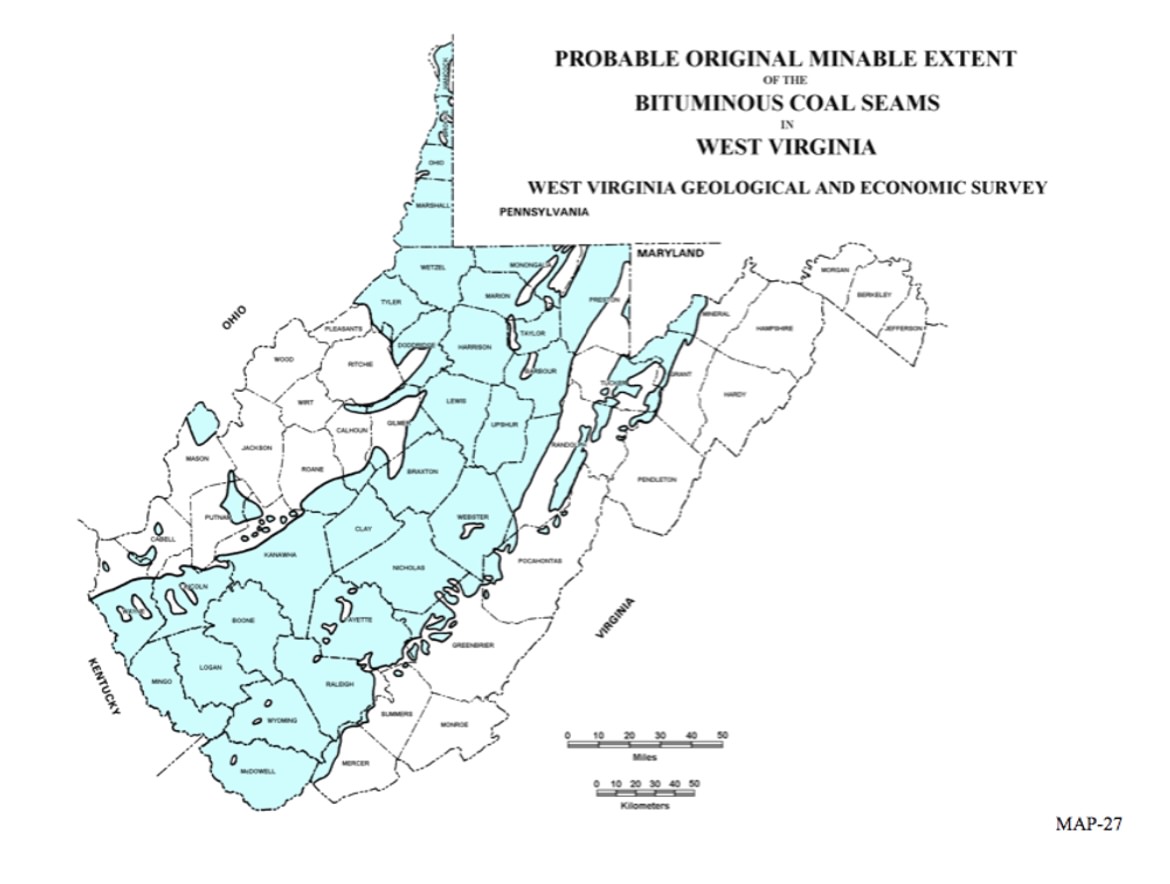
Coal
There's coal in them there hills. Yes, I wrote that myself. How about that? Coal is a sediment as well. And this is a map of my home state. The blue tinted counties are where you'll find the maximum amount of coal and they've been mining coal there for a long time and there's still a lot underground.
And coal being a sediment is there because something in the water, some material in the water sank to the bottom and became coal. And coal is, of course, the remnants of organic material and it's all over the world.Why do we have this standard peat bog theory for coal? It fails in explaining the existence of coal. Peat bogs are full of the roots of plants, but coal is almost entirely made of tree bark. Peat bogs are relatively small in size, but many coal seams go on for miles. Both the top and bottom of peat bogs are irregular, but coal seams have perfectly flat bottoms and tops. So we've got some great distinctions, great differences between peat bogs and coal seams. Peat bogs do not contain marine fossils. Of course, you don't see too many sharks swimming around in a peat bogs. But coal beds do contain many marine fossils.
So there's got to be a different explanation for the existence of coal other than peat bogs, and yet peat bogs remain the consistent, persistent explanation for the existence of cold. Why is that? This doesn't sound very scientific at all.
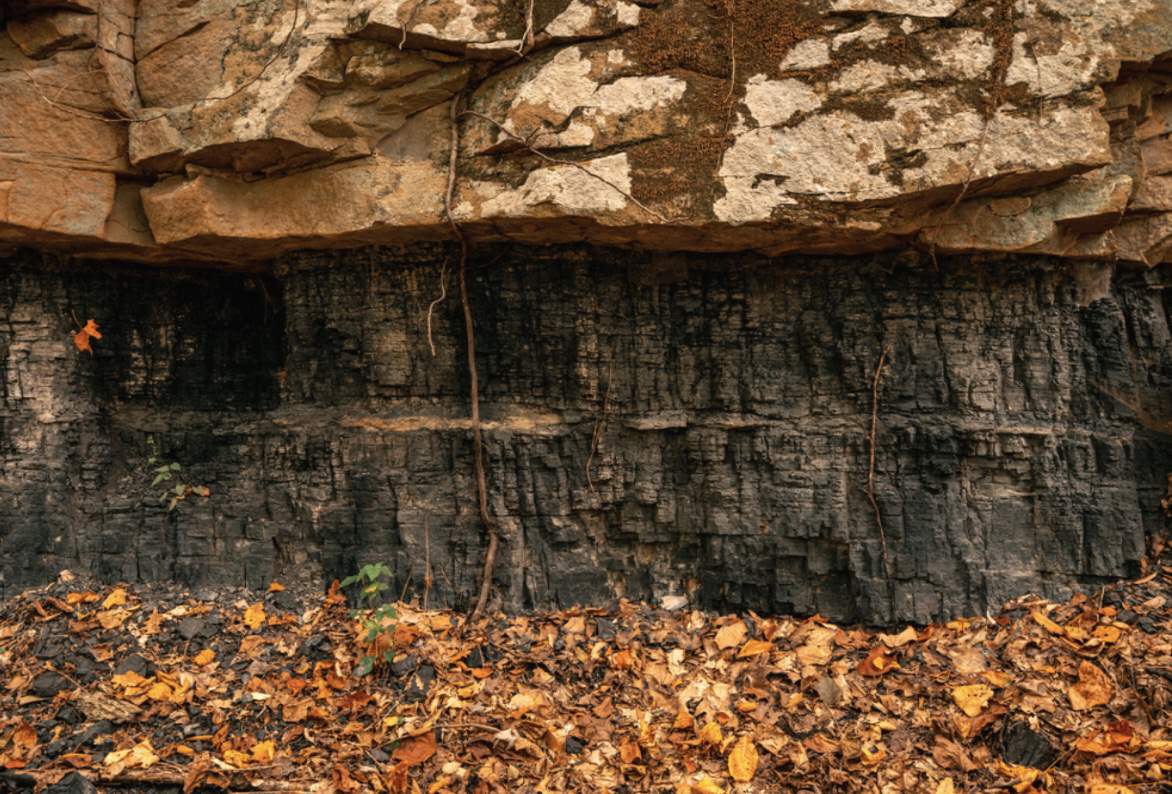
Bituminous Ubiquity
This is a picture of a coal seam that is buried in the rock. It's not really embedded. It's just that as the rock formed and more rock formed on top of it, based on the sediments that settled. Coal is formed from organic sediment and it is everywhere on the planet. It takes about 10 to 20 feet of organic material to make a layer of coal one foot thick. So think about that. You find a layer of coal one foot thick that represents 10 to 20 feet of organic material. We're talking about trees, plants, whatever it might be. Something that was once alive that has been compressed into coal like what happened in Powder River.
The Powder River coal seam in Wyoming is 200 feet thick. My goodness, how much organic material was buried to make the Powder River coal seam? That's a lot of organic material. So we're back to the idea of peat bogs. You don't find any peat bogs that are anywhere near the size of the Powder River coal seam which is 200 feet thick and extends for 75 miles. That's a long way for a peat bog to go. We just don't know of any peat bogs anywhere near that size today. But this coal seam extends 75 miles and in places it's 200 feet thick. So what in the world would cause that sedimentary stuff to go to the bottom and create so much of it. And we've got a mine in Russia that's 3000 feet deep. How did all of this material get so deep? And there's certainly enough of it to make it worth going down there to mine it. So there's plenty of it, plenty of this coal that formed from sedimentary material. How in the world did it get stacked so thick and how did it get buried so deep? Questions that should be on our minds.
We can make coal. Well, I can't make coal. I wasn't there. But researchers have made coal in less than four weeks and you can make coal only if there is a catalyst. In other words, plant material pressure and heat aren't enough. You have to have a catalyst. Guess what? Volcanic ash provides the perfect chemical elements for such a catalyst.
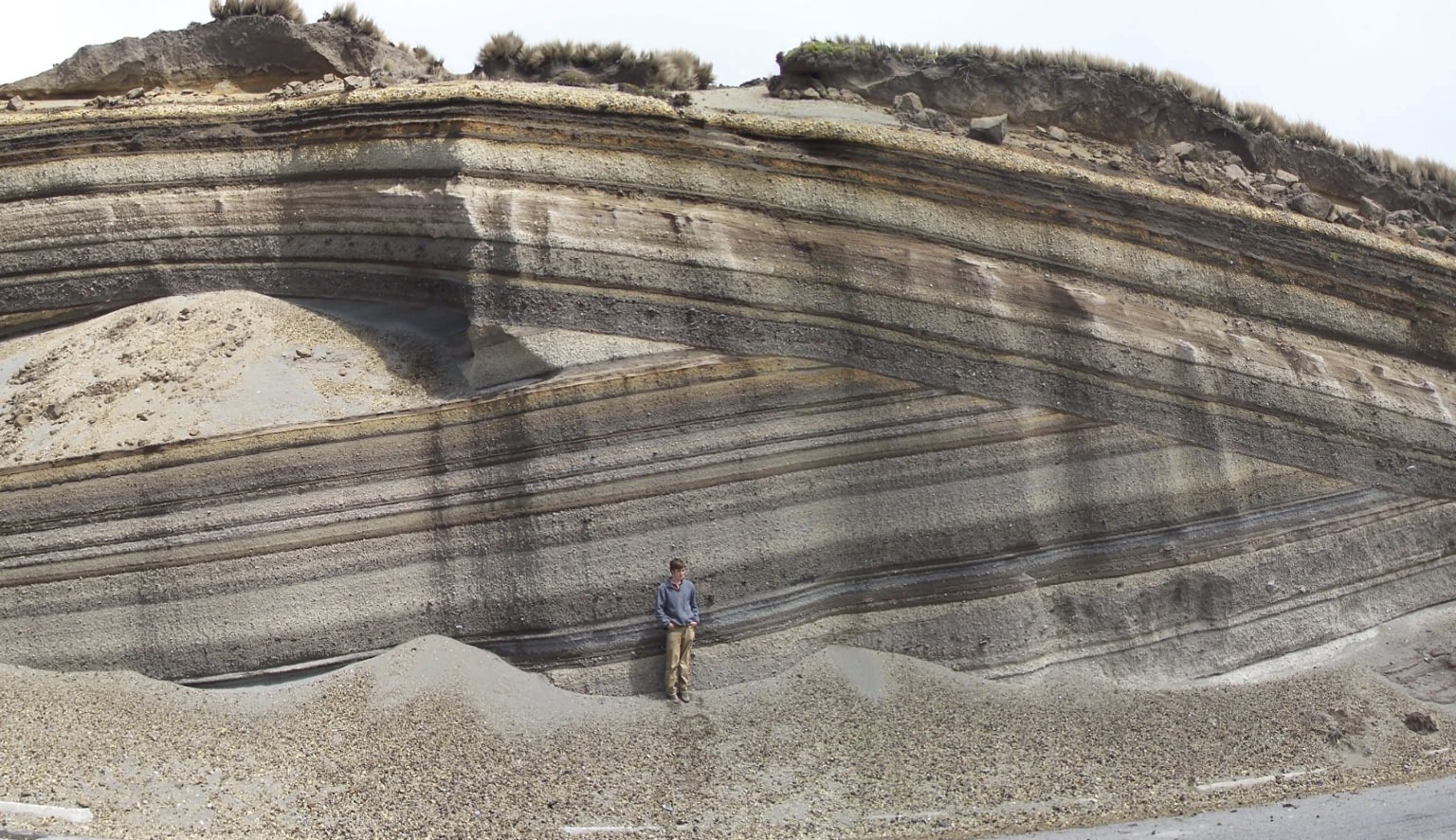
This is a picture from Ecuador of volcanic ash layers. These are sediments of volcanic ash. So there is evidence that sometime in the past there was plenty of volcanic ash to serve as a catalyst for the making of coal.

What staircase extends 450 miles and is two miles deep? That's a pretty big staircase. Even if you've got a three or four level house, you probably don't have a staircase that size. But here's a picture of the grand staircase in the United States of America. In Arizona and Utah, it is two miles worth of water borne sediment, two miles deep of water borne sediment. But how much water does it take to create sediment that is two miles deep? And you can see by this diagram some of the depth and the scope of this staircase.

Here's another picture of it from a distance. Very beautiful to look at. It's a wonder to behold. I want to ask you a question about this picture. You look across in the picture and you see the layers of sediment that are on that cliff face. But what about all of the layers of sediment that should be between whoever is taking that picture and that cliff face? Where did all of that sediment go? Looking at the cliff face it indicates that the sediment would have extended towards the photographer. But it's all gone. Where in the world is that sediment? Something had to move that sediment out of the way. And, in my mind, the only thing that could have a would have been the receding waters of the flood.

The picture above is an aerial view of the Grand Canyon, and I don't know what that looks like to you, but that sure looks like a lot of erosion.
Below, the close-up picture on the left looks similar to the Grand Canyon, with little tributaries coming out of the main body. But when you zoom out to the wide shot, you can see that it is just a farmer's field after some rain and things have eroded.
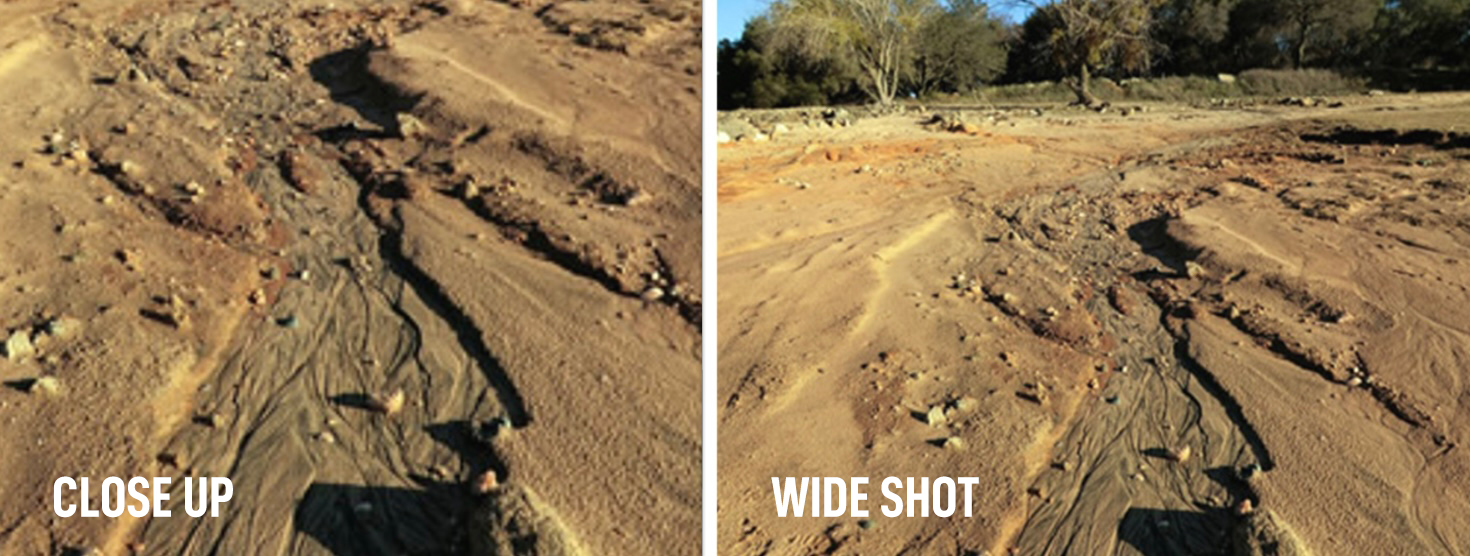
You've got rocks and you've got debris out in the water. And where they would have been, debris with erosion if the water washes the debris along, that debris helps create more erosion. And so you can see how great gashes through the earth would have been made by erosion in the past. And there certainly would have been a lot of heavy-duty erosion when the waters of the flood receded.
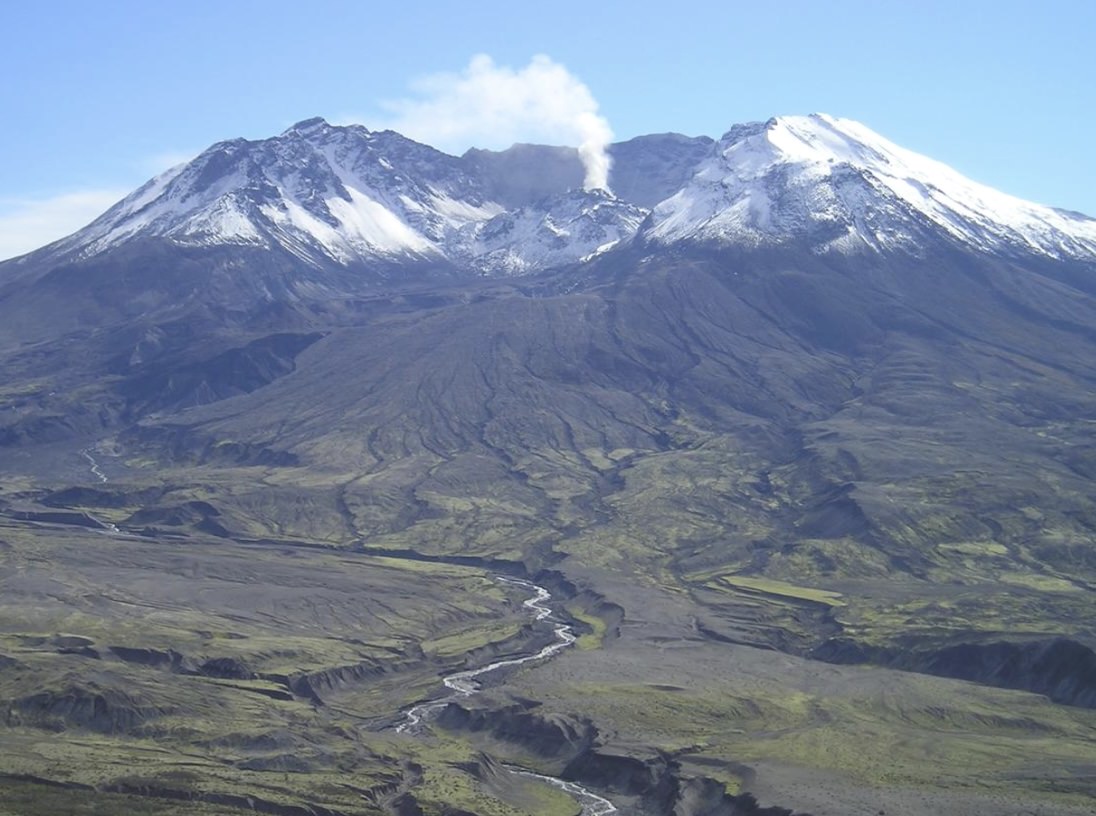
This is a picture of Mount St. Helens as it exists today with the canyon in the foreground. This canyon has the north fork of the Turtle River down in the bottom of it. However, on May 18th, 1980, 600 feet of volcanic ash (rock) deposition filled that riverbed.
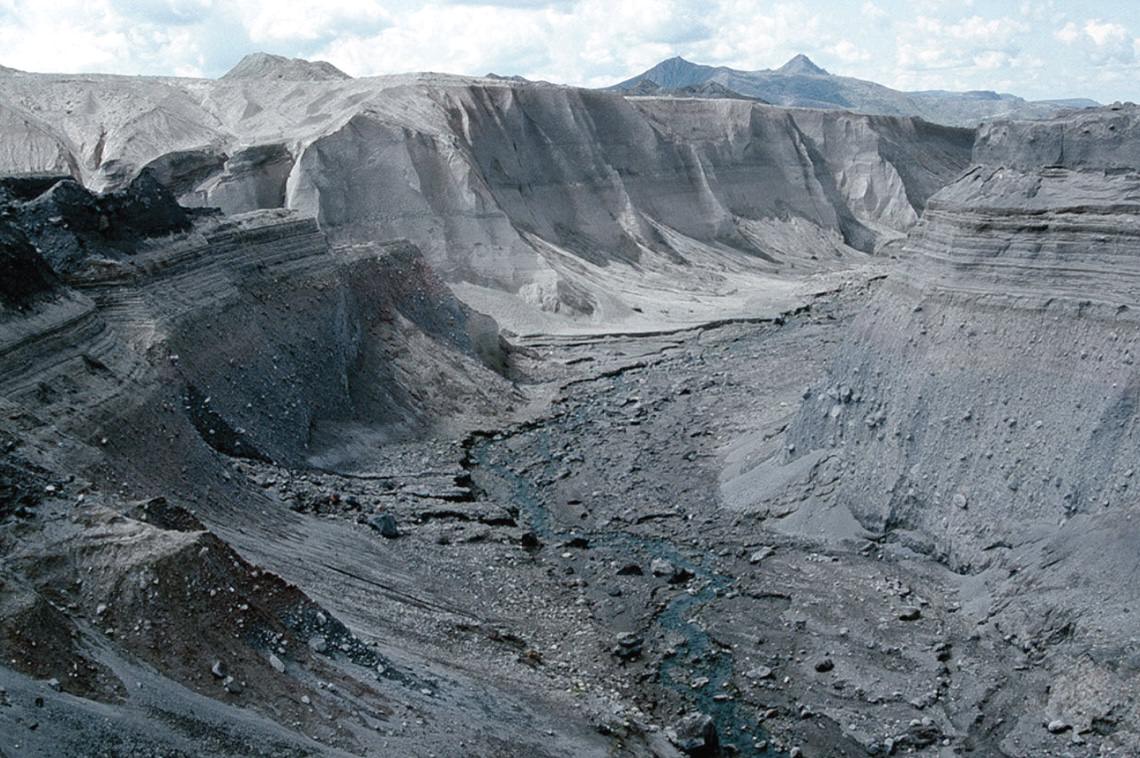
March 19th, 1982, almost two years later, a 90 mile per hour mud flow carved out the canyon in hours, literally in hours. It didn't take days. It didn't take weeks. It didn't take months or years or millions of years. That canyon was carved out in hours. And that canyon is about 1/40 the scale of the Grand Canyon.
So what does this canyon show us? It shows us that rapid sedimentation could have happened quickly in the past rather than over millions or billions of years. Rapid erosion in current times is a solid argument for rapid erosion in the past. If things erode quickly now as this canyon did, why couldn't they have eroded quickly in the past?
If you've gone to the Grand Canyon and you've stood there with the Ranger, and the Ranger points down to the Colorado River and says, that little river down there carved out this canyon over millions of years, don't you have to wonder about that? I wonder is that how the Grand Canyon was carved out, rather than by a huge runoff of water instead of that little old Colorado River flowing down there in the bottom?
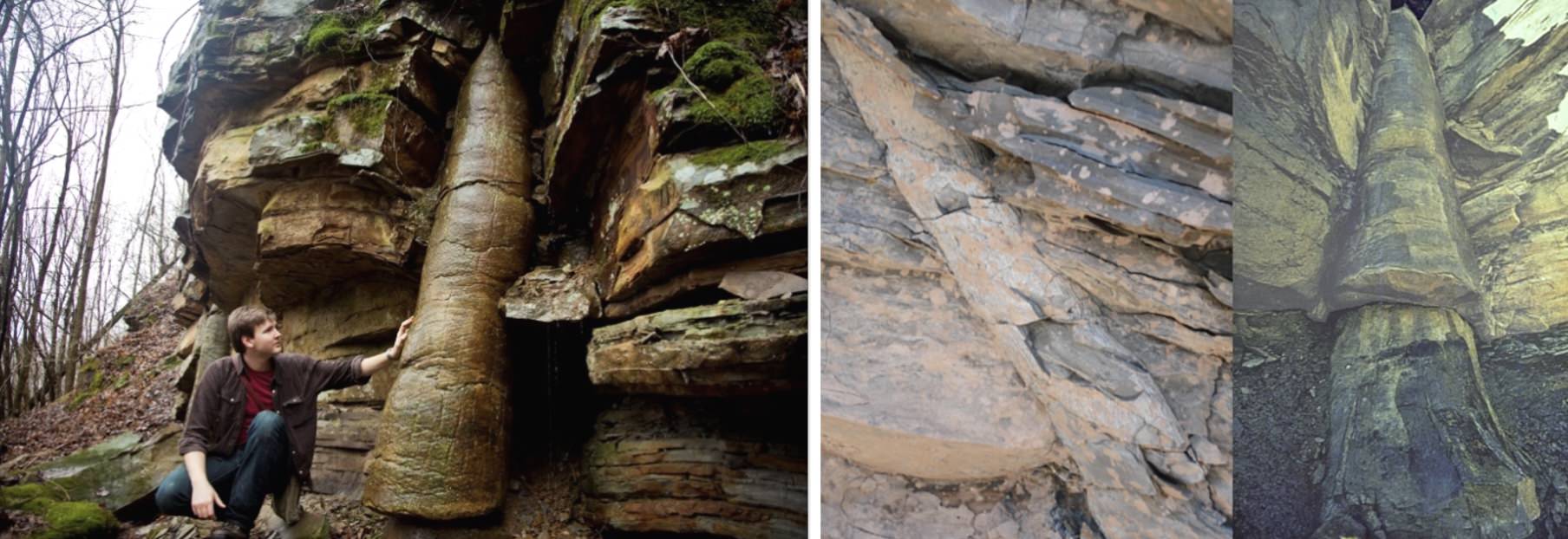
Here are pictures of some polystrate fossilized trees. Poly means many and strate means straight. These are fossilized tree trunks that are going through several layers of strata. I want you to think about this, because if it is as I have been told almost all of my life, that each one of those layers of strata was laid down over thousands and millions of years, then how in the world did those organic tree trunks survive long enough to be fossilized through several multiple layers of strata? It seems to me that that tree trunk would have corroded, eroded, decomposed long before any other layers of strata would have engulfed it. And yet we see these polystrate tree trunks going through several layers of strata. This is just another piece of evidence that these layers were put down quickly rather than over long ages of time.
What are they crying out to you?
Let this be a sign among you, so that when your children ask later, saying, 'What do these stones mean to you?'
- Joshua 4:6
When Joshua and the Israelites crossed the Jordan River coming into the Promised Land, they were told to go into the river sand one man from each tribe to pick up a stone and set those stones on the opposite side from which they entered, so that in time to come, their children would see those stones and ask what are these stones here for? And their fathers, their grandfathers, their great grandfathers would be able to relate to them how God brought them through the Jordan River, caused it to back up in the water flow, to stop so that they might come across on dry land and those stones would be there as a memorial, as a testimony that God brought Israel into the promised land.
I'm telling you today that the stones we see all around us, the rock layers, the strata, these are all testifying to the fact that God did, in fact, bring a great flood in Noah's day. And as those floodwaters retreated, receded, they carved out what we now know to be the great canyons and the scenic beauty that we see around us everywhere.



